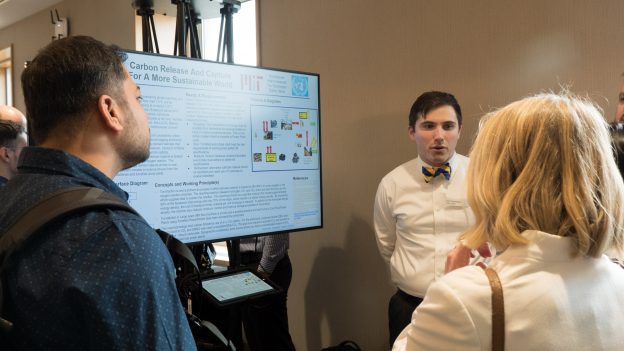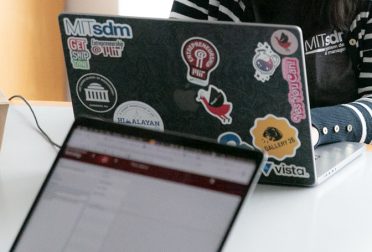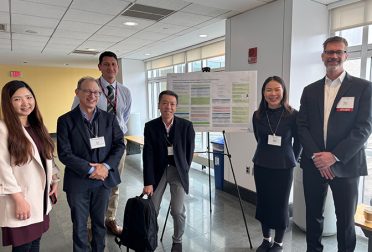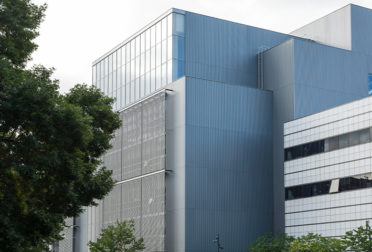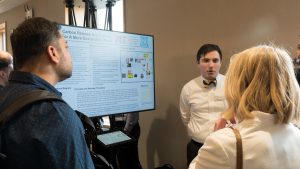
Society today depends on networks of complex, interconnected systems—ranging from the miniaturized technology seen in wearable “smart” devices to the vast Internet of Things. On January 14, MIT System Design and Management (SDM) highlighted these systems and the work that goes into them in a day-long Technology Showcase held on campus.
The day began with a poster session featuring work done by SDM students in SDM’s integrated core class, which combines system architecture, systems engineering, and project management in a holistic approach to problem solving.
Last fall, students in the class were asked to explore technologies being developed in MIT labs and centers and to consider ways to combine those technologies using an integrated systems approach to problem-solving. At the showcase, students presented the ideas they came up with by studying technologies ranging from 3D printers to micro-thrusters.
For example, Tomas Egana SDM ’18 reported that he and his team, which included fellow SDM ’18s Jude Chen, Donald Lew, and Daniel Valderrama, found an interesting way to connect the world of biopharmaceuticals with research into food preservation. Half of the team focused on the Love Lab at the Koch Institute for Integrative Cancer Research at MIT, which is working on sustainable biomanufacturing using the common yeast fungus to produce chemicals for medical applications. The other half investigated the Laboratory for Advanced Biopolymers, which has found that applying silk fibroin to strawberries and bananas creates an edible and non-toxic shell that can extend the shelf lives of these fruits far beyond conventional refrigeration. The SDM team then theorized that the Love Lab technique could be used to create a yeast variant that could produce silk fibroin so that the silk would not have to be sourced from silkworms.
In the afternoon, students were joined by representatives from companies across a variety of industries for a session in which company representatives pitched potential projects to students, seeking systems-based solutions to a range of business needs. Students then had the opportunity to sign up in teams to work on these projects, which will serve as part of SDM’s integrated core class for the spring term.
Students had dozens of projects from which to choose. Ashley Whitney, an SDM alum working at Cambridge Consultants, pitched a project to determine how to leverage digital health solutions such as smartphone apps or wearable technology to help patients manage post-operative care. On a broader scale, the Japanese shipping company Mitsui OSK Lines proposed that students apply the tools of the sharing economy and the Internet of Things to create an “Uber for shipping” that would help companies find optimal vessels and routes for their goods.
The students put in bids for the problems they wanted to solve, and in the end 22 teams were formed. To see how the projects proceed throughout the spring term, follow SDM on Twitter and Facebook for the latest updates!

